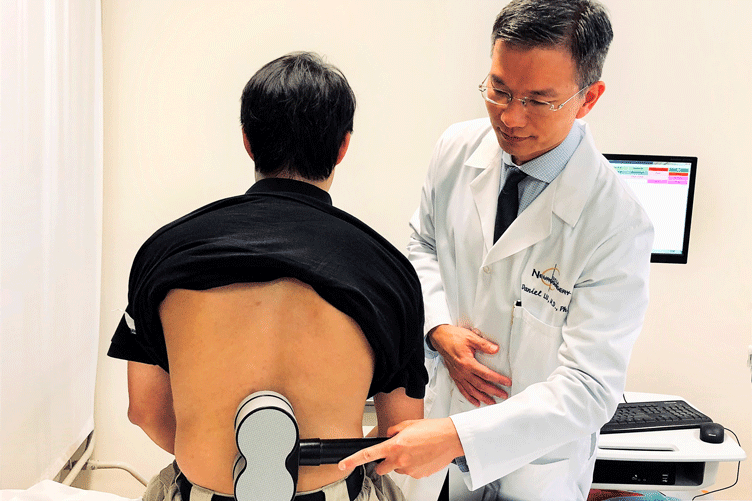Across the country, 250,000 people live with spinal cord injury. The paralysis that often results has been thought permanent. But UCLA’s pioneering experts aren’t satisfied with the status quo: They’re pursuing promising approaches that could lead to groundbreaking treatments.
First Steps Toward Success
One inspiring innovator is Dr. Daniel Lu. His research combines basic science and clinical testing, exploring a variety of stimulation methods to activate the spinal cord and restore function and mobility.
“The spinal cord contains alternate pathways that it can use to bypass the injury and get messages from the brain to the limbs,” says Lu, director of the UCLA Neuroplasticity and Repair Laboratory and UCLA Neuromotor Recovery and Rehabilitation Center. “Electrical stimulation trains the spinal cord to find and use these pathways.”
Lu’s work already has helped the small sample of patients involved in his studies thus far. Two individuals improved finger mobility, grip strength, and ability to perform everyday tasks, thanks to a stimulator implanted next to the spinal cord. Another five regained bladder control and improved quality of life through noninvasive magnetic stimulation of the lumbar spine.
Moving the Needle in Neuroscience
Now philanthropy will enable Lu to take the next step toward turning these successes into reality for thousands hoping for treatment. A $3 million gift from The Louis and Harold Price Foundation, which has supported UCLA for more than five decades, will expand Lu’s studies with the goal of repeating results with larger patient groups and securing new resources for further development. Findings will advance the field toward new therapies — whether proving that treatments are effective or allowing doctors to narrow their focus to the methods that work best.
“The Price Foundation had many opportunities to fund different approaches to working on spinal injury,” says President Bonnie Vitti. “We chose UCLA because we are excited by Dr. Lu’s preliminary findings, and we have confidence in the university’s quality of research.”
Investing in that potential, the foundation is eager to see UCLA lead the way on the West Coast. And with the university’s expertise in neuroscience — from cerebral palsy and traumatic brain injury to stroke and Alzheimer’s disease — there’s no telling what other fields might benefit from the results.
Published December 2018

Dr. Daniel Lu treats a patient.



